Our Sustainability Commitment
Recognising that climate change poses a threat to the global economy, nature and society-at-large, Evia Private Tours commits to take action immediately in order to:
1. Halve our greenhouse gas emissions before 2030
2. Achieve net zero emissions before 2050
What does it mean in practice to commit to taking action immediately?
Evia Private Tours is expected to take the following key steps within six months of making the commitment (as set on the end of August 2023):
- We will quantify our current greenhouse gas emissions.
- We are setting short and medium-term goals for emission reductions in line with the commitment to halve emissions by 2030 and reach net zero by 2050 at the latest.
- We are developing a plan to achieve our emission reduction targets.
- We are starting taking concrete action to reduce emissions from the identified key areas.
- We will encourage businesses within our network to take action.
CO2 Emissions Offset
In line with this commitment, we offset our CO2 emissions annually. Along with Travel Sustainable International, we work together to minimise as much as possible our footprint and we are setting goals for further actions.
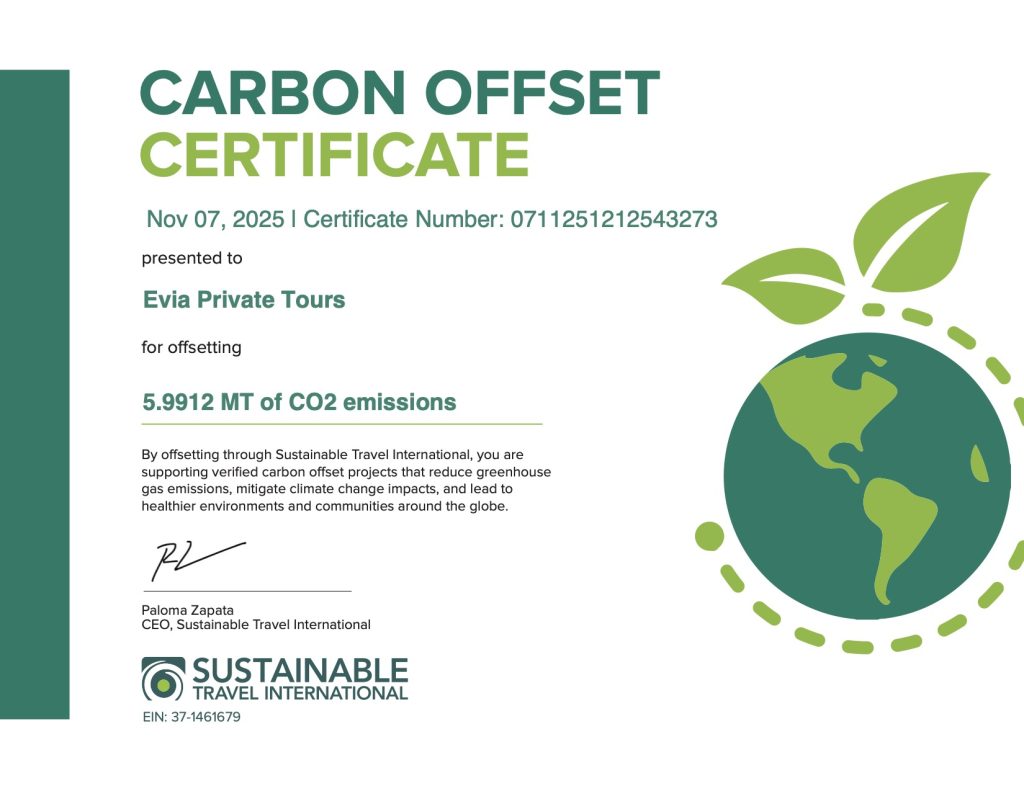
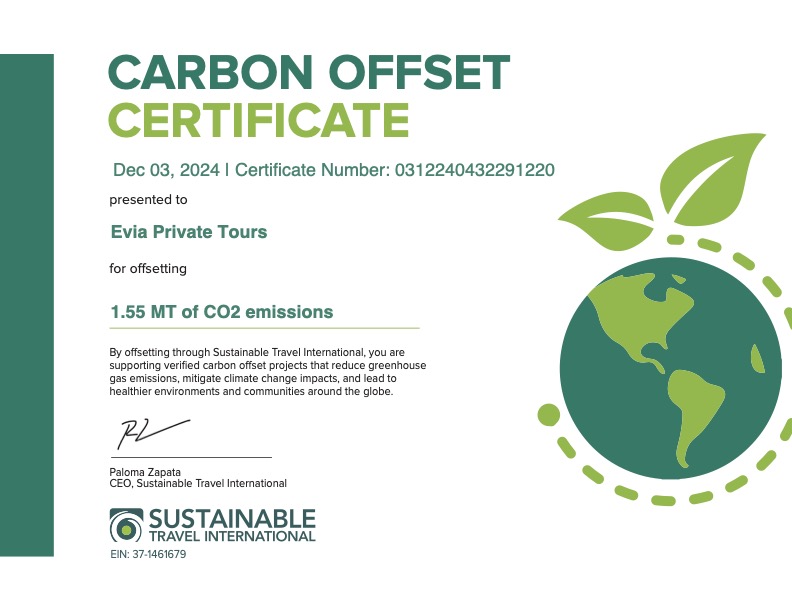
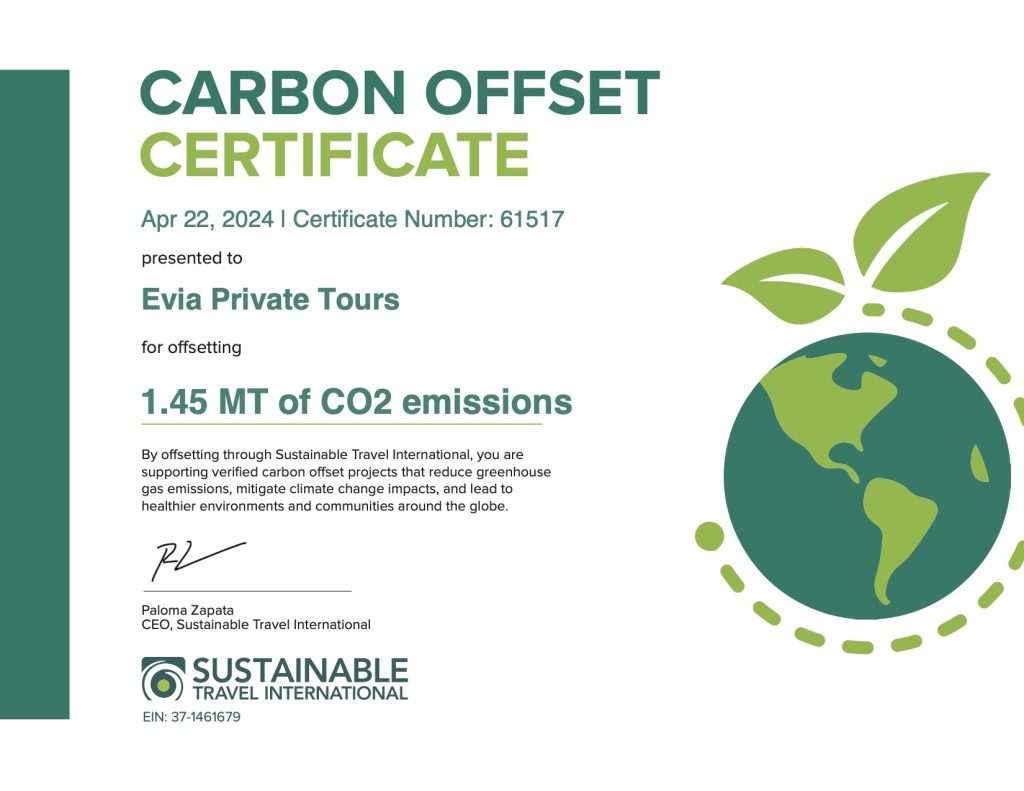
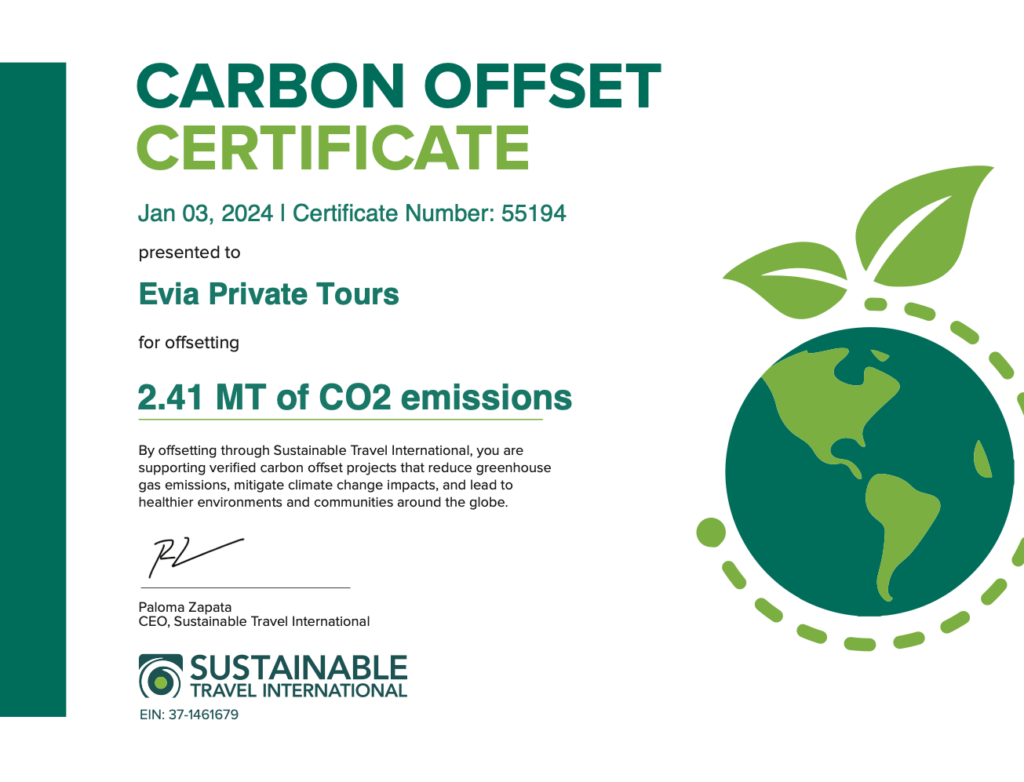
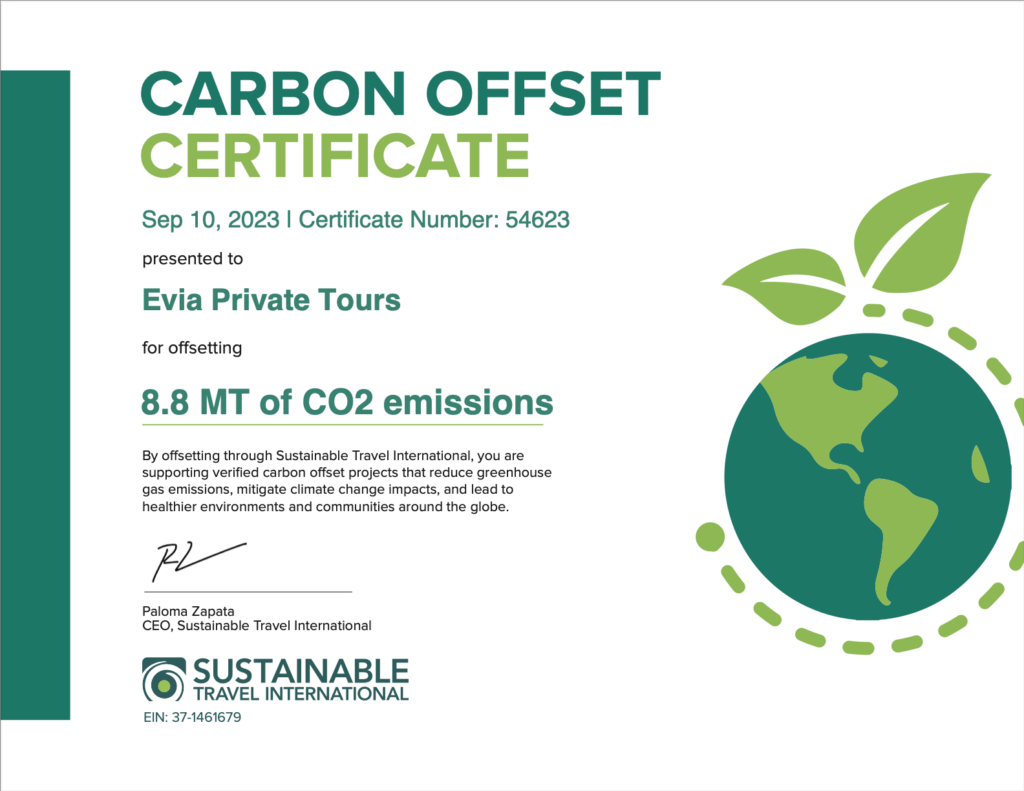
TourCert Qualified: Travel for Tomorrow
As of today (October 2023), we are part of the @TourCert Community! Thanks to the TourCert qualification, we now know where we stand in terms of sustainability in the business. This is how we promote responsible tourism – because we want everyone to benefit and aim to set an example for more sustainability in tourism.
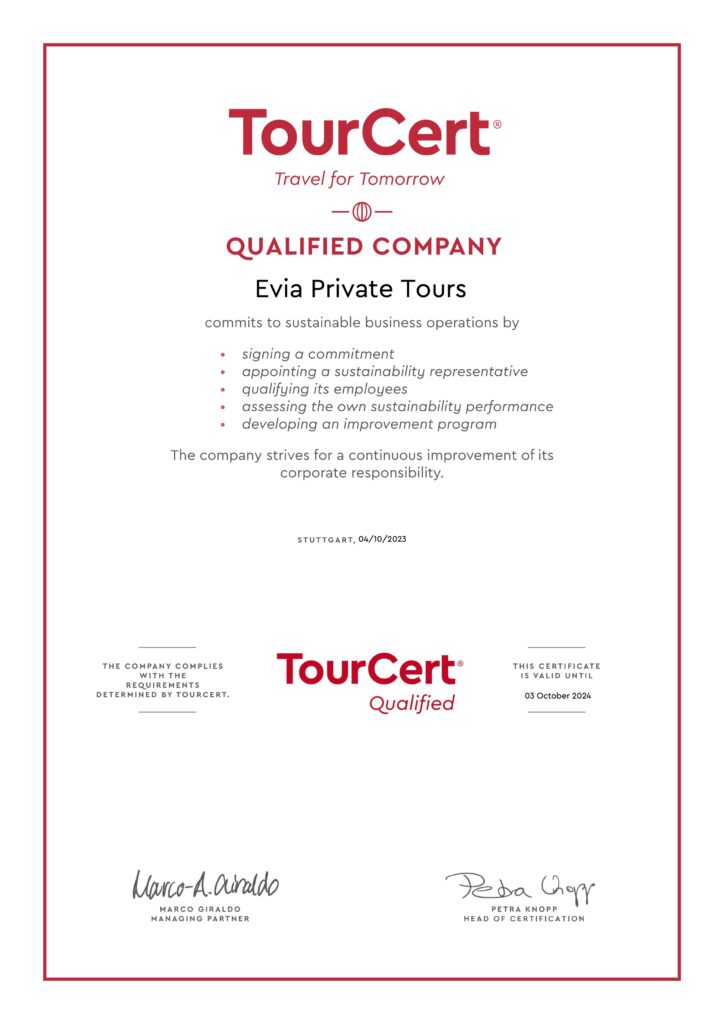
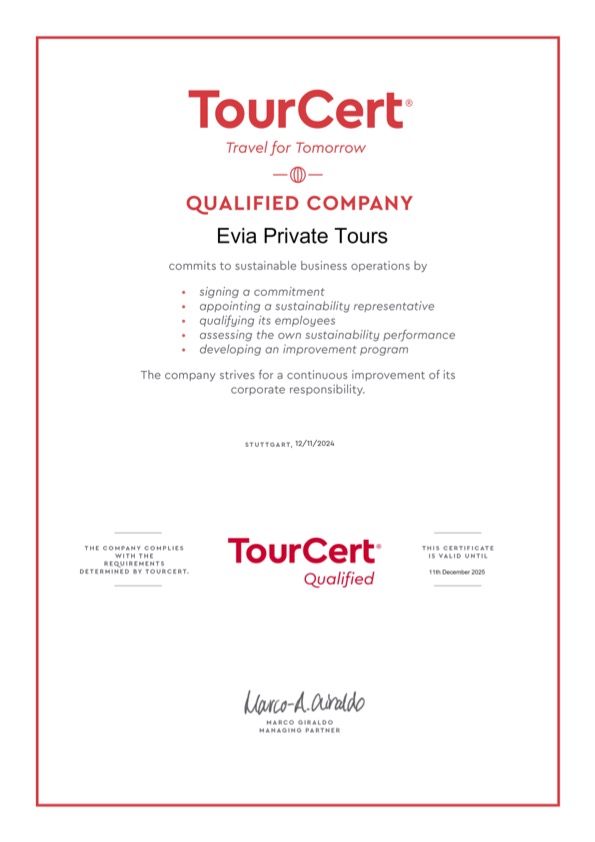
What does it mean to achieve net zero emissions before 2050?
To reach a state of net zero emissions, we must reduce our emissions by at least 90% and counterbalance the remaining residual emissions with durable or permanent carbon removals. The term “residual” refers to emissions that cannot technically be eliminated. Such residual emissions shall not exceed 10% of baseline emissions.
What does it mean to disclose progress on a yearly basis?
In addition to making a commitment and taking action to halve emissions before 2030 and achieve net zero emissions before 2050, we should also transparently communicate our progress on an annual basis.
SME Climate Hub Committed Businesses are also encouraged to publicly report their progress annually by including this data into their annual reports and their sustainability reports.
Do you recommend investments in carbon credits, “compensation” or “offsetting”?
If we do not protect and restore nature for it to become a carbon sink, we are unlikely to keep global warming at even 2 degrees Celsius. Therefore, corporate leaders have an additional imperative to contribute to nature-positive goals. This can be accomplished today by purchasing high quality carbon credits on the voluntary carbon markets to support nature-based solutions and by investing in carbon removals.
Carbon credits can be used to “counterbalance” emissions which cannot currently be removed. However, these credits should not be considered as “offsets” or “compensation”. Purchasing carbon credits should only be used as a complement to halving emissions before 2030 towards net zero, and should never be substituted for reducing emissions or developing and scaling climate solutions to reduce global warming.
To ensure impact, it is important to select projects carefully. By purchasing carbon credits, we always select using certified, relatively new carbon credits, which are coming from projects aligned with the Sustainable Development Goals.
At net zero, any residual emissions that cannot technically be removed, should be counterbalanced by durable carbon removals. Until this state is reached, we cannot claim to be net zero.